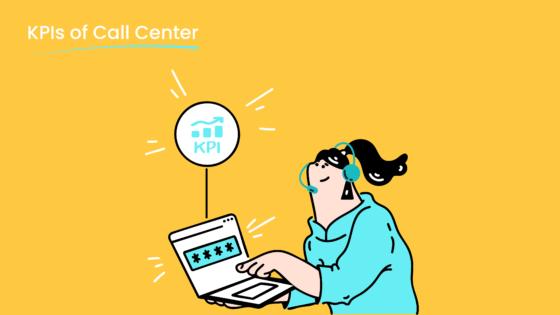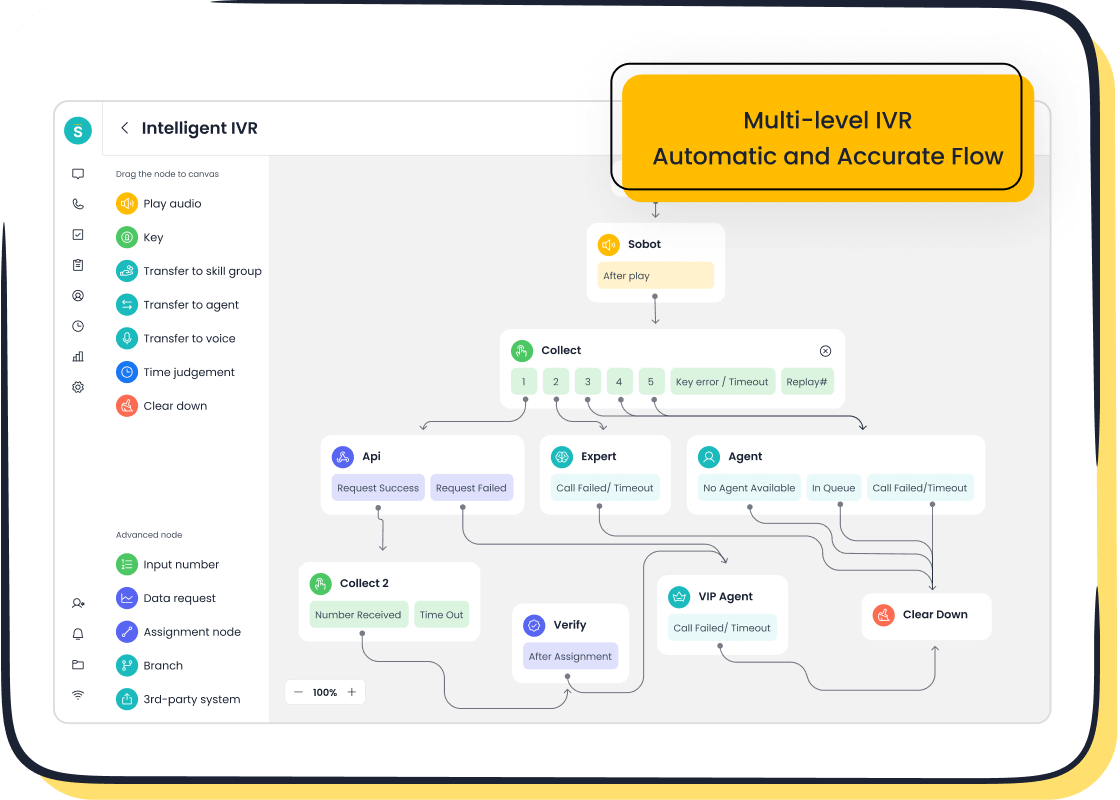What Is Quality Assurance in a Call Center and Why It Matters

What is quality assurance in a call center? Quality assurance means you set standards and check every customer interaction for quality. You want your call center agents to resolve customer issues quickly and follow clear steps. When you use quality assurance, you see real gains in customer satisfaction and operational efficiency. Data shows that strong quality assurance improves customer satisfaction scores, call resolution, and agent accountability. Think about your own team—do you know how every customer call shapes your business? Sobot leads with innovative solutions like Sobot AI and the Sobot call center, helping you deliver excellent customer experiences.
What Is Quality Assurance in a Call Center

When you ask, "what is quality assurance in a call center," you look for a process that checks every customer interaction for quality, accuracy, and consistency. In a call center, quality assurance means you set clear standards for how agents handle calls, resolve issues, and communicate with customers. You monitor calls, review agent performance, and use data to improve service. This process helps you deliver better customer experiences and reach your business goals.
Sobot’s approach to call center quality assurance focuses on technology and data. With Sobot’s Voice/Call Center product, you get real-time monitoring, call recording, and analytics. These tools help you track every customer call and measure agent performance. You can set up intelligent IVR menus, route calls to the right agents, and use AI-powered voicebots to handle routine questions. This system gives you the control and insight you need to run a successful quality assurance program.
Key Elements of Quality Assurance
You need to understand the key elements that make call center quality assurance effective. These elements form the backbone of any quality assurance program:
- Clear Standards: You set guidelines for how agents should greet customers, handle questions, and resolve problems. These standards help every agent know what you expect.
- Monitoring and Evaluation: You listen to calls, review chat transcripts, and check how agents follow procedures. Sobot’s Voice/Call Center lets you monitor calls in real time and review recordings later.
- Feedback and Coaching: You give agents feedback based on real examples. You use data from call monitoring to coach agents and help them improve.
- Data-Driven Insights: You collect data on call duration, resolution rates, and customer satisfaction. Sobot’s analytics dashboard shows you trends and helps you spot areas for improvement.
- Continuous Improvement: You use what you learn to update your standards and training. This keeps your call center quality assurance program strong and effective.
Tip: With Sobot, you can automate many parts of quality assurance. For example, you can use AI to analyze calls and flag issues, saving you time and making your reviews more accurate.
Common Standards and Metrics
You measure call center quality assurance with clear standards and metrics. These help you see how well your team meets your goals and where you can improve.
| Metric | What It Measures | Why It Matters |
|---|---|---|
| CSAT (Customer Satisfaction Score) | How happy customers are with their experience | Shows if your service meets customer needs |
| FCR (First Call Resolution) | How often agents solve issues on the first call | Reduces repeat calls and boosts satisfaction |
| AHT (Average Handle Time) | How long agents spend on each call | Helps you balance speed and quality |
| QA Score | How well agents follow your standards | Ensures consistency and compliance |
| NPS (Net Promoter Score) | How likely customers are to recommend you | Tracks customer loyalty and advocacy |
You can set your own standards for each metric. For example, you might want a CSAT score above 90% or an AHT under five minutes. Sobot’s Voice/Call Center gives you real-time data on these metrics. You can track trends, compare agents, and see how changes affect performance.
Sobot’s customer Weee! used these metrics to transform their call center. After switching to Sobot, Weee! saw a 20% increase in agent efficiency and a 50% reduction in resolution time. Their customer satisfaction score reached 96%. Read more about Weee!’s success with Sobot.
When you ask, "what is quality assurance in a call center," you see that it is more than just checking calls. It is a full system that helps you deliver great customer service, improve agent performance, and reach your business goals. Sobot’s Voice/Call Center gives you the tools and data you need to build a strong call center quality assurance program.
Why Call Center Quality Assurance Matters
Call center quality assurance shapes your business outcomes. When you focus on quality assurance, you see real improvements in customer satisfaction, agent performance, and risk management. You build trust with your customers and create a reliable environment for your customer service agents.
Customer Satisfaction
Quality assurance helps you deliver consistent customer interactions. You monitor calls, review agent performance, and use AI tools to spot service gaps. These steps lead to higher customer satisfaction scores.
- You identify issues quickly and refine scripts to match customer needs.
- AI-driven analytics help you understand what drives satisfaction and retention.
- Companies report a 20-30% increase in customer satisfaction after implementing quality assurance tools.
- Sobot’s customer Weee! raised their satisfaction score to 96% by improving call center quality assurance.
Note: Continuous feedback and targeted coaching reduce repeat calls by up to 40%, boosting customer satisfaction and loyalty.
Agent Performance
Quality assurance gives you the tools to measure and improve agent performance. You track how agents handle calls, resolve issues, and follow standards.
- Real-time monitoring and analytics highlight strengths and areas for improvement.
- Targeted coaching based on call center quality assurance findings shortens onboarding time by 20%.
- Sobot’s Voice/Call Center lets you automate performance reviews and provide actionable feedback.
- You see a 20% increase in agent efficiency and a 50% reduction in resolution time, as shown by Weee!’s results.
Compliance and Risk
Quality assurance protects your call center from compliance risks. You set clear standards and monitor customer interactions for accuracy.
- Automated call tracking and recording ensure agents follow regulations.
- Integration with CRM systems reduces errors and maintains service consistency.
- High-quality assurance programs foster long-term client retention and trust.
Call center quality assurance drives measurable business outcomes. You improve customer satisfaction, agent performance, and compliance, creating a strong foundation for growth.
Quality Assurance Framework
A strong quality assurance framework gives your call center structure and direction. You use this framework to guide your quality assurance processes, set clear goals, and measure performance. When you follow a framework, you make sure every process supports your business objectives.
Setting Standards and KPIs
You start by setting clear standards for every process in your call center. These standards define how agents should interact with customers and handle calls. You also set KPIs (Key Performance Indicators) to measure success. Common KPIs include call resolution rates, customer satisfaction, and agent performance. You use these KPIs to track progress and identify areas for improvement.
Tip: Review your standards and KPIs regularly. This keeps your quality assurance framework up to date and aligned with your goals.
Evaluation Criteria
You need strong evaluation criteria to support your framework. These criteria help you measure agent performance and the effectiveness of your quality assurance processes. You use audits to check if agents follow procedures and meet standards. Regular qa audits give you a clear view of your team's strengths and weaknesses. You can use a table to organize your evaluation criteria:
| Evaluation Area | Criteria Example | Audit Frequency |
|---|---|---|
| Call Handling | Greeting, tone, accuracy | Weekly |
| Compliance | Script adherence, disclosures | Monthly |
| Resolution | First call resolution, follow-up | Bi-weekly |
You use audits to ensure every process meets your quality assurance goals. Performance evaluations help you see where agents excel and where they need support.
Ownership and Accountability
You assign ownership for every part of your quality assurance framework. Each team member knows their role in the process. Supervisors lead audits and track performance. Agents take responsibility for their own results. You create accountability by sharing audit results and setting clear expectations. When everyone understands their part, your framework works better.
Note: Regular audits and clear accountability keep your quality assurance processes strong and effective.
A well-built quality assurance framework helps you manage every process, improve performance, and deliver better customer experiences.
Call Monitoring and Evaluation

Real-Time Monitoring
You need strong monitoring in your call center to maintain high quality assurance. Real-time monitoring lets you see how agents handle customer interactions as they happen. You can listen to calls, watch agent screens, and track key metrics. This approach helps you catch problems early and support agents right away. When you use real-time monitoring, you improve quality monitoring and reduce mistakes. According to Gartner, 70% of contact center leaders plan to invest in AI for better monitoring and analytics. You can use these tools to boost your call center’s performance and customer satisfaction.
Call Monitoring Tools
You need reliable call monitoring tools to support quality assurance in your call center. These tools record calls, track agent actions, and provide data for quality monitoring. You can review call recordings, analyze call center metrics, and spot trends in customer interactions. Quality monitoring tools help you measure agent performance and ensure compliance. You can set alerts for long calls or missed steps. With the right call monitoring tools, you keep your call center running smoothly and maintain high standards.
Tip: Use call monitoring tools to give agents feedback and coaching. This helps you improve quality assurance and build a stronger team.
Using Sobot Voice/Call Center

Sobot’s Voice/Call Center gives you advanced real-time monitoring and analytics. You can track every call, review recordings, and analyze data in one unified workspace. The system supports intelligent IVR, smart call routing, and AI-powered voicebots. You get instant insights into agent performance and customer interactions. Sobot’s real-time monitoring features let you respond quickly to issues and maintain strong quality assurance. You can automate reports, set up alerts, and integrate with your CRM. With Sobot, you improve quality monitoring and deliver better service in your call center.
Feedback and Continuous Improvement
Actionable Feedback
You need actionable feedback to drive quality assurance in your call center. When you collect customer feedback, you gain direct insights into how agents interact with customers. You should ask for customer feedback after every call. You can use surveys, ratings, or quick questions. Agents benefit from feedback that highlights what went well and what needs improvement. You can organize feedback in a table to make it easy for agents to review:
| Feedback Type | Example | Benefit for Agents |
|---|---|---|
| Customer Feedback | "Agent was polite and helpful" | Builds confidence |
| Supervisor Feedback | "Missed greeting script" | Targets improvement |
| Peer Feedback | "Handled escalation well" | Shares best practices |
You should use customer feedback analysis to spot patterns and trends. This helps you adjust your quality assurance standards and improve customer service.
Coaching and Training
You must use feedback to guide coaching and training for agents. When you see feedback about common mistakes, you can create targeted coaching sessions. You should schedule regular coaching meetings for agents. You can use role-play, call reviews, and customer feedback to help agents practice new skills. Coaching helps agents feel supported and confident. You should track feedback from coaching sessions to measure improvement. Agents who receive coaching based on feedback show faster growth and better customer interactions.
Tip: Use feedback from multiple sources to design training programs that address real customer needs.
Continuous Improvement Loops
You should build continuous improvement loops into your quality assurance process. You collect feedback, coach agents, and update your standards. You repeat this cycle to keep improving customer service. Continuous improvement means you never stop looking for ways to make agents stronger and customers happier. You should review feedback every month and share results with your team. When you use feedback for continuous improvement, you create a culture of learning and growth. Agents see feedback as a tool for success, not just a score.
Remember: Customer feedback drives quality assurance and continuous improvement in every call center.
Best Practices for Quality Assurance
Consistency and Transparency
You build trust in your call center by making quality assurance processes consistent and transparent. Start by gathering feedback from agents and supervisors to spot any fairness or transparency issues. Use technology like Sobot’s omnichannel dashboards and real-time screen recordings to give everyone visibility into performance data. Train managers to shift from criticism to coaching, so feedback becomes constructive and collaborative. Encourage agents to help define quality standards and evaluation criteria. This two-way feedback creates a democratic environment in your call center. Measure and optimize your quality assurance initiatives using metrics such as quality scores, customer satisfaction, retention, and engagement. These steps improve agent trust and performance.
- Assess current processes with agent and supervisor feedback.
- Use real-time collaboration tools for visibility.
- Train managers to provide coaching, not just criticism.
- Promote two-way feedback and agent involvement.
- Continuously measure and optimize using key metrics.
Agent Engagement
You keep agents engaged in your call center by making quality assurance interactive and rewarding. Gamification motivates agents to reach new goals. For example, you can set up leaderboards for first call resolution or customer satisfaction. Recognize top performers and share positive feedback in team meetings. When agents see their progress, they feel valued and motivated. Involve agents in regular feedback sessions and let them suggest improvements. This approach increases ownership and commitment to quality outcomes. Sobot’s unified workspace makes it easy for agents to access feedback and track their own performance.
Tip: Use regular feedback and gamification to boost morale and drive continuous improvement in your call center.
Leveraging Technology
You enhance quality assurance in your call center by leveraging technology. Sobot’s AI-driven solutions automate call monitoring, analyze customer feedback, and flag issues in real time. Use benchmarking methods like first call resolution, customer satisfaction, average speed of answer, calls put on hold, and call transfers to compare your call center’s performance with industry standards. Integrate customer feedback into your quality assurance program to gain direct insights into customer experiences. This integration helps you anticipate needs, strengthen relationships, and improve service quality. Sobot’s omnichannel platform unifies all feedback and performance data, making it easier to act on insights and deliver superior customer experiences.
Remember: Customer feedback integration is essential for a customer-centric call center. It helps you identify improvement areas and build long-term competitive advantage.
Quality assurance in your call center helps you deliver better service and build trust. You use feedback from customers, agents, and supervisors to improve every process. When you act on feedback, you help agents grow and keep customers happy. Sobot gives you tools to collect, analyze, and use feedback for continuous improvement. Start by reviewing your feedback systems and explore Sobot’s solutions to strengthen your quality assurance today.
FAQ
What is quality assurance in a call center?
Quality assurance in a call center means you set standards for customer interactions. You monitor calls, review agent performance, and use data to improve service. This process helps you deliver consistent, high-quality customer experiences.
How does Sobot support call center quality assurance?
Sobot provides real-time monitoring, call recording, and analytics. You can track agent performance, automate reports, and use AI-powered tools to flag issues. These features help you maintain high standards in your call center.
Why is call monitoring important for quality assurance?
Call monitoring lets you review agent interactions as they happen. You can catch mistakes early, provide instant feedback, and ensure agents follow your standards. This process improves both customer satisfaction and agent performance.
What metrics should you track for call center quality assurance?
You should track metrics like CSAT (Customer Satisfaction Score), FCR (First Call Resolution), AHT (Average Handle Time), QA Score, and NPS (Net Promoter Score). These metrics show how well your team meets your quality goals.
How often should you review your quality assurance process?
You should review your quality assurance process regularly. Monthly reviews help you spot trends, update standards, and coach agents. Frequent reviews keep your call center quality assurance program effective and up to date.
